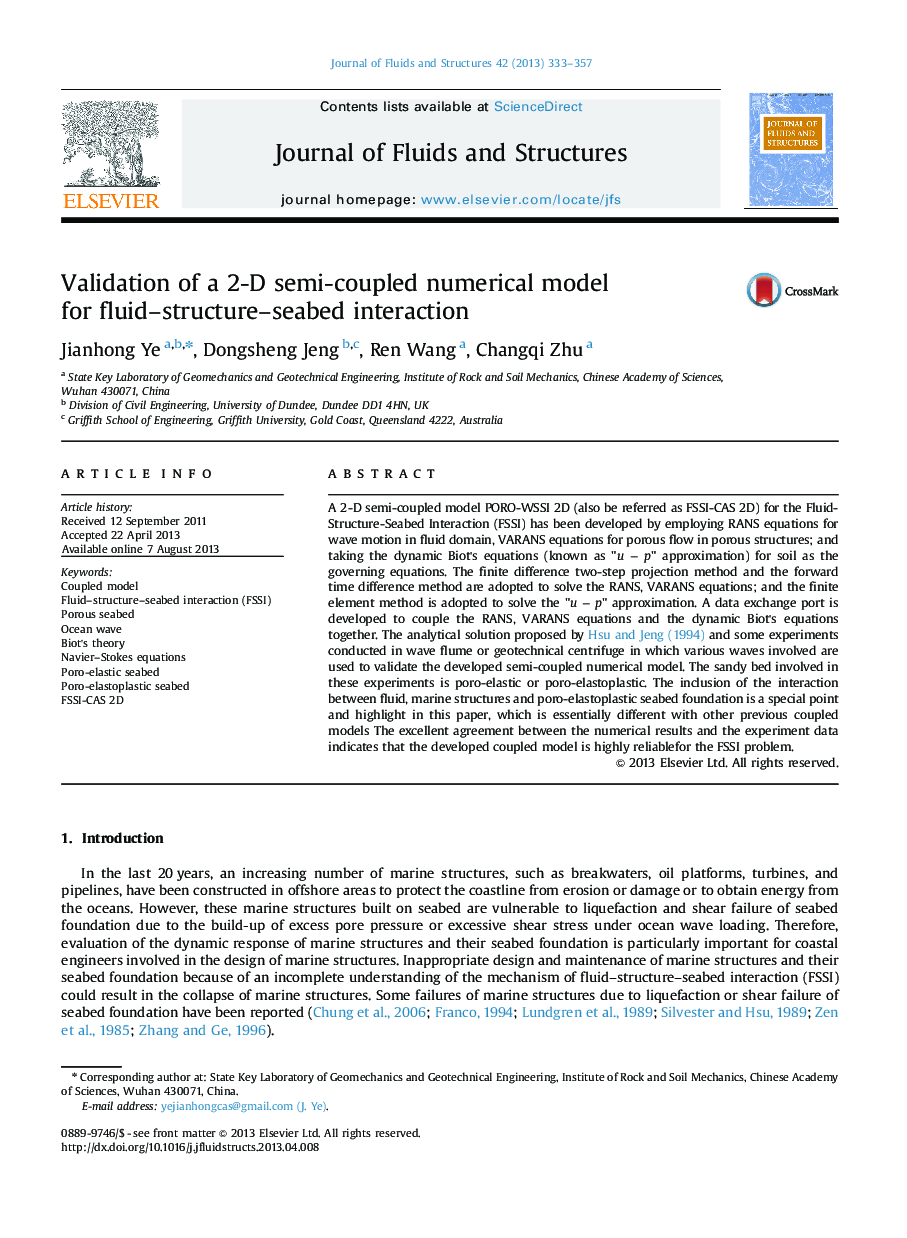| Article ID | Journal | Published Year | Pages | File Type |
|---|---|---|---|---|
| 792341 | Journal of Fluids and Structures | 2013 | 25 Pages |
A 2-D semi-coupled model PORO-WSSI 2D (also be referred as FSSI-CAS 2D) for the Fluid-Structure-Seabed Interaction (FSSI) has been developed by employing RANS equations for wave motion in fluid domain, VARANS equations for porous flow in porous structures; and taking the dynamic Biot's equations (known as "u − p" approximation) for soil as the governing equations. The finite difference two-step projection method and the forward time difference method are adopted to solve the RANS, VARANS equations; and the finite element method is adopted to solve the "u − p" approximation. A data exchange port is developed to couple the RANS, VARANS equations and the dynamic Biot's equations together. The analytical solution proposed by Hsu and Jeng (1994) and some experiments conducted in wave flume or geotechnical centrifuge in which various waves involved are used to validate the developed semi-coupled numerical model. The sandy bed involved in these experiments is poro-elastic or poro-elastoplastic. The inclusion of the interaction between fluid, marine structures and poro-elastoplastic seabed foundation is a special point and highlight in this paper, which is essentially different with other previous coupled models The excellent agreement between the numerical results and the experiment data indicates that the developed coupled model is highly reliablefor the FSSI problem.
